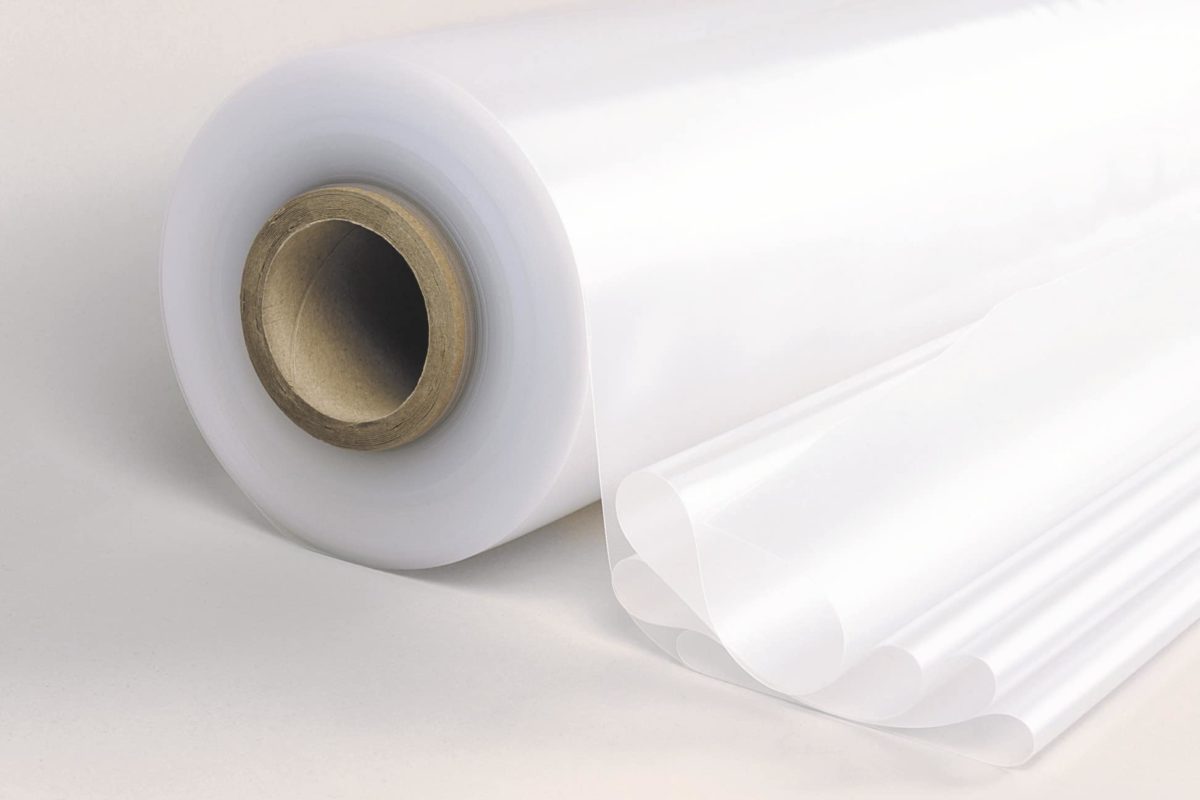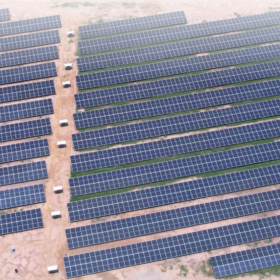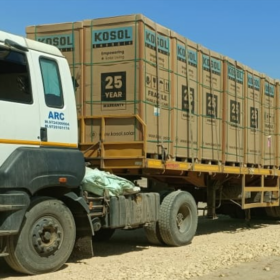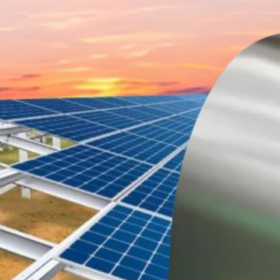From pv magazine 03/2021
Ethylene vinyl acetate (EVA) has long been the material of choice for the encapsulation of silicon PV modules. Cheap and easy to process, EVA benefits from an established, cost-optimized supply chain, alongside decades of research for its specialized application in PV modules. This has left few opportunities for other materials to gain market traction.
However, recent developments in module technology may have created just such an opportunity. Use of another class of materials, polyolefins (POEs), has grown rapidly in the past few years. IHS Markit put the market share of POE encapsulants at 20% last year, almost doubling from 11% in 2017. And this share is expected to reach 30% by the end of 2022.
“The main drivers for POE growth will be the strong increase of bifacial glass-glass technology (both p-type and n-type), as well as competitive prices reached by increasing scale in manufacturing,” says IHS Markit senior research analyst Karl Melkonyan. “Though EVA will continue to account for most of the market, it is not recommended to use for bifacial technology or others such as n-type and thin films.”
The growth of bifacial modules, the majority of which use glass front and back, raises multiple challenges for encapsulant materials. Despite estimates that they are at least 30% more expensive than EVA, module manufacturers are turning to POE-based encapsulants as the most attractive solution. “By its nature, EVA has limitations, especially when considering 30 or 40 year lifetimes,” explains George Touloupas, director of technology and quality at CEA. “POE is in principle a better material, and it is more stable than EVA. With the scaling up of bifacial modules, its share has grown considerably.”
Over time, EVA decomposes in field conditions, producing acetic acid. In a glass-backsheet stack, this acid can permeate through the backsheet and escape the module without causing any harm. For glass-glass modules however, acetic acid is trapped and can build up, eventually causing corrosion and significant performance loss. This may have motivated some suppliers to investigate POE as an alternative for glass-glass modules. Producers of transparent backsheet materials also cite the ‘breathability’ of their backsheets, and the prevention of acetic acid build-up, as an advantage for their products over glass-glass in bifacial modules.
The EVA breakdown mechanism, however, is driven by moisture, and glass-glass modules effectively prevent water ingress. “The absence of water, combined with EVA stabilizer additives, should ensure that glass-glass modules do not suffer from excessive corrosion due to acetic acid formation,” explains Touloupas. This has proved sufficient for modules to pass the accelerated testing conducted by manufacturers and in third-party quality assurance. And EVA is still used in glass-glass lamination, although often in combination with a POE encapsulant.
Potential-induced degradation
The second challenge for bifacial modules, and largest driver for the recent pickup in the use of POE encapsulants, relates to the prevention of a new mechanism of potential-induced degradation (PID) affecting the rear side of bifacial modules. A combination of new EVA formulations and frontside cell surface treatments is broadly thought to have “solved” PID issues in monofacial modules. With recent growth in bifacial technology, however, a new mechanism of PID particularly affecting the rear side of cells has been observed (see pv magazine 02/2021, p.44).
Replacing EVA with a POE-based encapsulant is among the only effective solutions for module manufacturers to secure products against PID risk and related reliability issues. Since it seems the materials in a POE encapsulant are inherently more expensive to produce than EVA, and the large modules on the market today require a thicker encapsulant layer, as well as having a larger area to cover, innovations focused on minimizing the costs are already being seen.
Some module suppliers opt to use the tried and tested EVAs for frontside encapsulation, and a single sheet of POE between the cells and the rear glass as a PID prevention strategy. Encapsulant and backsheet manufacturer First Applied Materials – based in Hangzhou, China – has patented a coextruded EVA/POE/EVA encapsulant sheet, where a thin layer of POE at the center ensures good PID resistance. The lower cost but still reliable EVA makes up the bulk of the encapsulant layer, and these coextruded encapsulants increasingly appear on module makers’ roadmaps.
“Coextrusion products not only have the advantages of fast, easy processing in lamination with EVA, but also retain the strong anti-PID performance of POE,” says Kevin Wu, First Applied Materials’ overseas marketing director. “The limitation is that the characteristics of both EVA and POE must be understood deeply, and it is difficult to control the thickness uniformity of the middle POE layer.”
Processing POE
Aside from the added material cost, POEs are also held back from the mainstream by difficulties in their processing. Lower temperature and pressure requirements may be attractive to manufacturers, but long cycle times, a narrow temperature window, and low glass adherence are not. Until these issues are solved, manufacturers will likely stick to EVA unless absolutely necessary.
Manufacturing POE encapsulant as a thermoplastic, rather than a cross-linked polymer, is one way to potentially make the materials easier to process. This is the approach favored by Austrian manufacturer Borealis in its Quentys BPO range of POE-based encapsulants.
“BPO is a tailor-made thermoplastic encapsulant where adhesion functionality is directly incorporated in the polymer chain as opposed to grafted solutions, leading to excellent inherent adhesion,” said Alper Muraben, team leader for solar at Borealis. “In addition, the polymer’s high melt temperature and high viscosity eliminates the need for the encapsulant to be cross-linked during module lamination. This significantly simplifies both the resin-to-film extrusion step and module lamination process.”
Muraben further explains that the Quentys encapsulant allows for shorter lamination cycles compared to other POE materials, and also processing at lower pressures and temperatures compared to EVA. This in turn reduces stress placed on the cells during lamination. Finally, he notes that the high viscosity of the encapsulant minimizes the chance that cells or ribbons can move during the lamination process – relevant for modules utilizing non-soldering interconnection technologies.
First Applied Materials offers both cross-linked and thermoplastic POE products, including a range of encapsulants featuring Dow Chemical’s Enlight series of thermoplastic POE products. The company particularly recommends the cross-linked product for modules installed in high-humidity environments, and for prolonged PID resistance. For the thermoplastic materials, meanwhile, “the no cross-linking characteristic can effectively shorten laminating time of PV modules,” according to Wu. “And this helps to improve customers’ productivity.”
Italian laminating equipment manufacturer TekniSolar, meanwhile, has developed tools and processes which it says allow it to work effectively with either encapsulant material, as well as others. “The use of one material or the other, in our experience, depends mostly on the specific module technology,” explains TekniSolar CEO Vittore De Leonibus. “Our technology allows any type of panel to be laminated with a very short cycle time, thanks to the combination of multi-stage curing, a fast vacuum system, uniform heat application, and a flat press in place of the usual membrane.”
POE prospects
Bifacial is today regarded as a mainstream PV technology, and is expected to continue to rapidly grow over the next few years. And this should leave space for POE encapsulants to grow alongside.
Though EVA will likely continue to account for the larger market share in the short to medium term, other recent developments in module technology indicate that a slow shift toward POE is underway. Aside from bifacial, the gentler processing afforded by POE means it is widely favored for the lamination of heterojunction and TOPCon modules, the cells of which are highly sensitive to raised temperatures. Increasing module power ratings, as seen with the recent advent of larger wafer modules, could also be good news for POE.
“We expect POE to become a more viable option as solar panels increase in power,” says De Leonibus. “In other words, when the solar panel produces more, the cost of producing it will be allowed to exceed ceilings that are set for the most common solar panel types in production up until now.”
With its Quentys Encapsulant, Borealis has also been able to demonstrate an increase in module performance, compared with modules encapsulated with EVA. In testing conducted by the company at an outdoor site in Abu Dhabi, modules encapsulated with Quentys have demonstrated an energy yield more than 2% above reference EVA modules over a 12-month period. Laboratory testing conducted by Fraunhofer ISE has also shown significantly stronger performance from the Quentys-encapsulated modules,which were shown to lose 5.5% of their initial power rating after a harsh series of damp heat, UV and thermal cycling tests, compared to 33.4% for an industry reference EVA. “Another growth path for Quentys is some module makers wanting to replace traditional EVA applications with Quentys thanks to the productivity gains and higher power retention it brings,” said Muraben.
Rear-side PID protection has given polyolefins a push into the encapsulant market. And longer lifetime expectations, higher power ratings, and other developments in module technology mean that manufacturers will have an eye on them. Choice of material is only one piece of the puzzle, and quality of the backsheet or glass, and of the lamination process itself, are equally vital to ensuring that an encapsulant can offer good, long-term protection. “The bare truth is that POE is a better material than EVA, due to its stability; provided of course that the specific formulations are good and manufacturing is proper,” said CEA’s George Touloupas. “POE must reach the same cost and ease of manufacturing of EVA to fully replace it. This is not foreseen to happen soon, at least not in the short term.”
This content is protected by copyright and may not be reused. If you want to cooperate with us and would like to reuse some of our content, please contact: editors@pv-magazine.com.









By submitting this form you agree to pv magazine using your data for the purposes of publishing your comment.
Your personal data will only be disclosed or otherwise transmitted to third parties for the purposes of spam filtering or if this is necessary for technical maintenance of the website. Any other transfer to third parties will not take place unless this is justified on the basis of applicable data protection regulations or if pv magazine is legally obliged to do so.
You may revoke this consent at any time with effect for the future, in which case your personal data will be deleted immediately. Otherwise, your data will be deleted if pv magazine has processed your request or the purpose of data storage is fulfilled.
Further information on data privacy can be found in our Data Protection Policy.